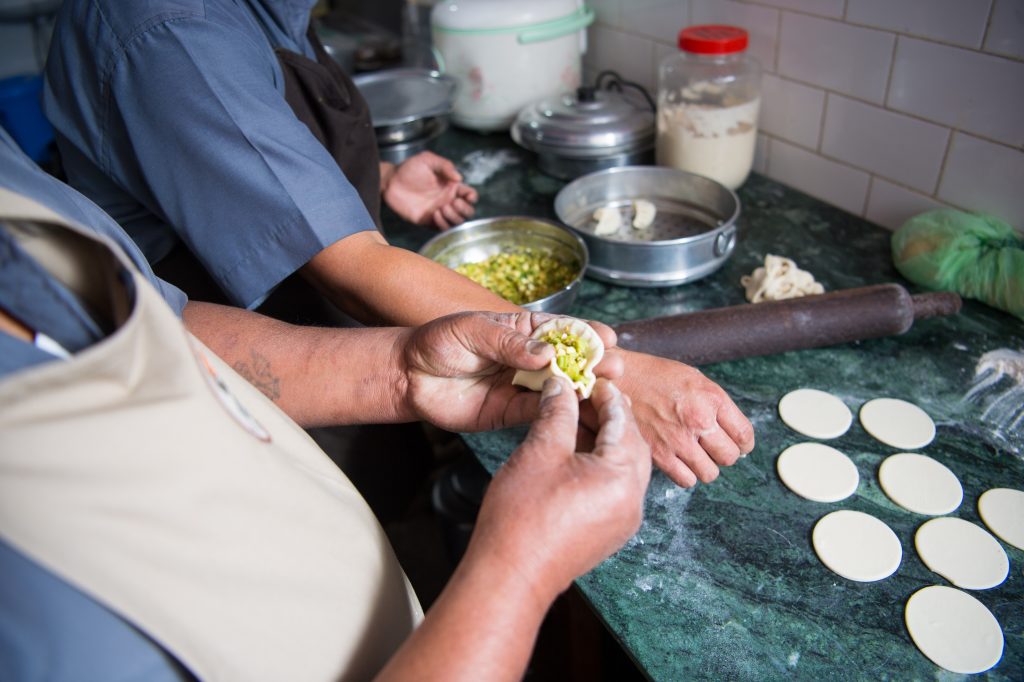With misinformation and greenwashing rife in tourism, Behind The Green takes it back to BASICS. Back to storytelling and human connection. Hear from the visionaries and teams behind the world’s leading sustainable stays. As well as inspiring experts that help us to REIMAGINE, RESET, and REINVENT tourism.
Written by Rebecca Woolford
When a 6-month trip turns into a 30-year mission there’s got to be a good reason, right?
Now the proud owner of Tiger Mountain Pokhara Lodge, it’s been a long journey to get here. Marcus, an ambassador of ‘travel as a force for good’ (and believe me he’s done the leg work), was kind enough to take the time to share with me his vision and story that is thirty years in the making.
I also learned during our chat, via the wonders of Zoom, that Marcus is both a keen sailor and horse rider. Unfortunately, for Marcus, neither of his hobbies is possible in Nepal, I could only assume this was to do with the location and terrain.
So, instead, he patiently waits to enjoy these simple pleasures when visiting his home in rural Devon, UK. I felt like this only added to his sense of commitment to this place and the people who call it their home.
Discover below what Marcus would change if he could start all over again and why even the world’s best sustainable retreats can never be 100% perfect.


So, let’s start at the beginning. What was the journey that led you to become the managing director of one of the world’s best eco-lodges?
“Well, Tiger Mountain Lodge was formed by two pioneers of tourism outside Kathmandu in Nepal – Tiger Tops and Mountain Travel, hence Tiger Mountain. I was in London when I was offered a job in Nepal for just 6 months. Those 6 months turned into 30 years, and this journey is still going on today.
Much later down the line, after the initial role, I became the CEO of the group. Then the owner of Tiger Mountain Pokhara Lodge. I felt that the company at the time – talked a lot about sustainability but there was little action. I was determined to change this.
Being eco-conscious has always been a part of this place, before it became trendy, we offered guests refillable flasks of water rather than plastic bottles. These sorts of practices have always been normal and obvious here, it’s just that now there are more people getting on board, which is great.”
Why not check out Tiger Mountain Lodge for yourself here?
I’m curious, is there anything you would do differently if you could start all over again?
“Absolutely, there is. Let me give you an example. Our current water tanks only hold about 4-5 days’ worth of water in the dry season, meaning we have to rely on a regular water supply. If we had installed bigger tanks in the beginning we could have taken advantage of the monsoon season when it rains for 3 months. This would enable us to be much more self-sufficient.”
Tell me, what is the most recent sustainable initiative you have implemented there?
“In June 2019 we installed a biogas plant in the staff kitchen so that their kitchen could run on a renewable source of energy. A new firm in Pokhara has started commercial production of bio-gas and we hope to partner with them for the guest kitchen and so use this energy on a bigger scale.
We like to be creative with our initiatives. We were struggling to recycle the leftover wine bottles here, then Sujan, our barman suggested we re-use and re-label them, to wave our guests goodbye when they leave with a bottle of water for their journey home. It is also a souvenir of their adventures. This label explains what we are doing to spread the word.”



How would you best describe your eco-lodge to potential guests? Is there anything they don’t expect?
“We try to stay as true to reality as possible in our photographs, we’d like our guests to come in and say, ‘this looks just like the pictures!’, but I don’t think a picture quite does our lodge justice. As guests walk up the steps towards our main lodge, they’re often taken aback by the beauty of the view and we almost have to have someone standing behind them to catch them in case they stagger backward!
I also don’t think guests expect our staff to be as kind and attentive, yet discreet, as they are. 87% of our staff have been here for 20 years and even helped to build the lodge, so they are genuinely passionate about this place.”
How do you naturally engage guests in your sustainable lodge’s ethos and values?
“In many ways, but mainly through natural conversation during their stay. We like to engage our guests in a natural and subtle way, rather than lecturing people or force-feeding them information. We often have volunteers staying with us from projects we are involved in, and if guests want to, we can introduce them to learn more. We let guests lead the way, on how much they’d like to learn about our approach.”


What changes have you observed over your 30+ years there in terms of the local community? Has the presence of the lodge changed their perception and reality?
“Firstly, I believe you have to engage people the way they want to be engaged, not the way you think they should. Tiger Mountain offers luxury to guests and holds a certain prestige, our community recognises this. They know that we have the ability to support local projects, and this engages them in the concept and ethos.
We focus on the community’s needs (not on our own), which is improving education in the local community, but we will only provide resources once there is support from the ministry of education and the community themselves. This way everything remains community-focused and community-led.”
What is the most challenging aspect of running a green, sustainable lodge?
“It’s impossible to be completely green and it’s difficult not to fall into the vortex of that. For instance, eco-friendly paint isn’t available in Nepal, and by the time you think about importing it, you have to consider the carbon emissions of doing so and whether it is really worth it. There is nothing that is completely environmentally benign, and it can be difficult to accept that. You always have to think about more ways to be green, so it is a challenge, but a rewarding one.”
What’s next for Tiger Mountain?
“The next initiative is the plan to introduce electric cars. This seems like a particularly good idea in Nepal as the country mostly runs on hydroelectric clean energy. We’re also considering adding a new hiking trail so that guests can hike to the camp and stay there before hiking back to the hotel. But it is early days. Generally, we don’t want to change the lodge itself, we don’t want guests to come back to a different place, we want it to feel familiar.”

